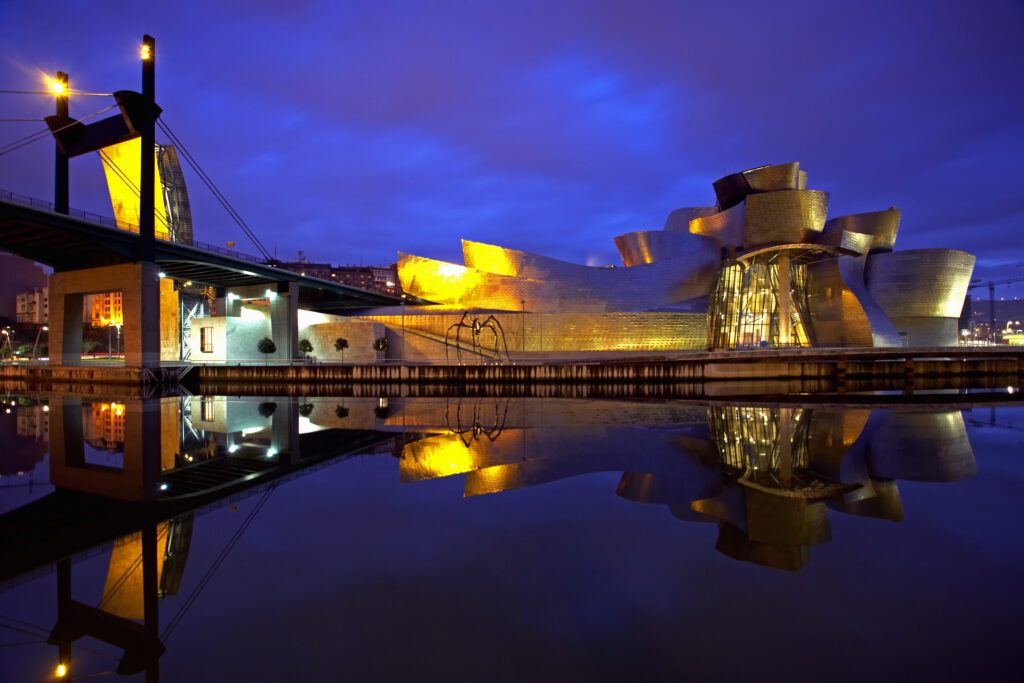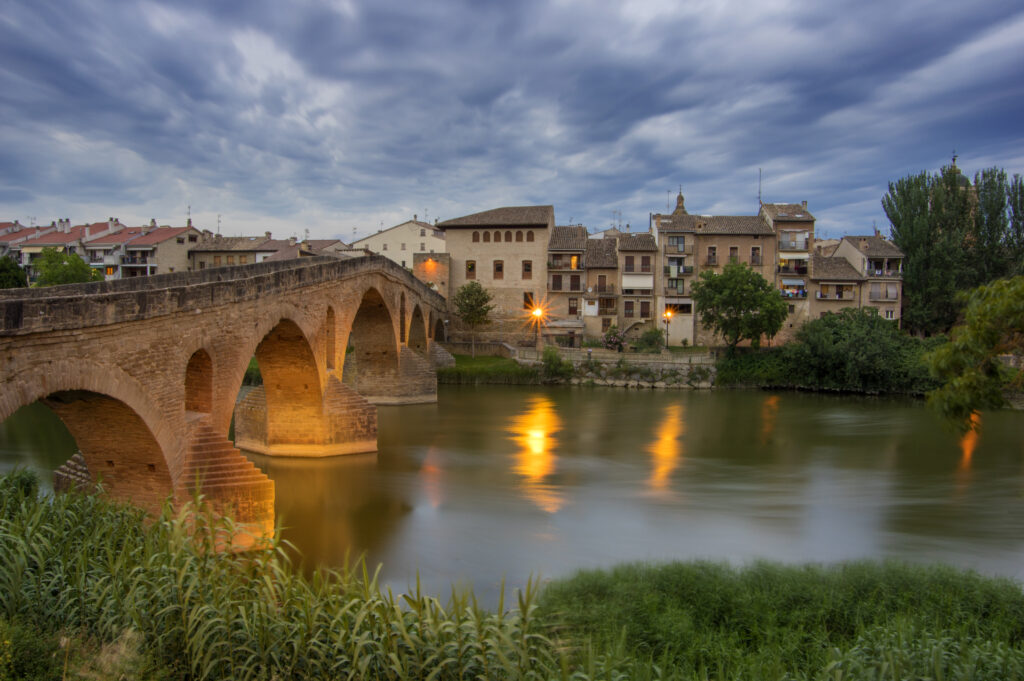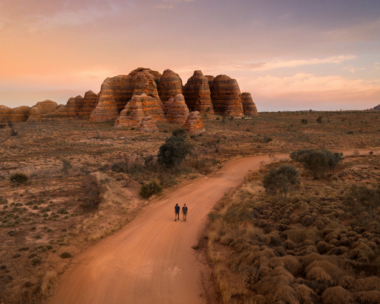In Spain, time can be measured not by your travel, but by life unfolding in the local plaza. Mornings begin slowly, the clink of coffee cups and buttery waft of sugar-dusted doughnuts welcoming the day. By the time the sun is high the squares are abuzz with laughter as children play on the stone paving, weaving around impromptu games of mini football.
When the evening lights flicker on, the thrum of multi-generational chatter spills beyond the pillars and arches, tumbling down the narrow cobblestone streets that twist around the old town, flooding the walkways with a tangible vibrance.
“We live our life in the street,” explains one Bilbao local. “We don’t stay in our homes. We just walk out and see who is there. Here in the street, we are all equals. It is our friendships, being together, that really matters.

Embracing life’s joys – namely friends, family and food – was a scene played out on repeat as I travel across the northern half of Spain. I’ve joined an Explore! tour group on a week-long travel adventure across Spain that spans from Madrid to the Basque Country and then Barcelona. I recommend packing stretchy pants: The food is superb.
Breakfasts tend to be light (a potato tortilla or a pastry and coffee), lunch is the main meal – a three-course ‘menu del dia’ in any local bodega (cafe) – is usually excellent value, while dinner might be pintxo (the Basque take on tapas). And, my oh my, do these morsels of delight ooze with flavour, from stuffed peppers and acorn-fed Iberian ham and cheese stacks to garlicky mushroom and prawn towers.
There’s marinated anchovies and slabs of goat’s cheese with a sweet walnut drizzle, served on a fresh slice of baguette. Food is like a love language here and I’m absolutely smitten.
A beautiful life
A seaside jewel huddled in a natural double harbour at the foot of the Bay of Biscay, San Sebastián, or Donostia to Basques, has attracted Hollywood attention. A glittering international film festival is held here with much fanfare every September.
Although the distinctly regal architecture and golden-sand beaches are a feast for the eyes, the local cuisine is the real star. Thanks to an abundance of cosy bodegas, locals make the most of bar hopping: One pintxo and txakoli (a lightly sparkling, fruity white wine) before moving on to the next. Don’t stop at savoury, though. Cheesecake at La Viña is a highlight. So too is San Sebastián’s fourth-generation family confectionary store Garrarte (and a good reminder of the benefit of having a local guide).

“Please come share my favourite thing in all the world!” beams Jospi, darting out the back and returning with a thick slab of turrón, a smooth marzipan-like nougat made with almonds and honey. “One for you and one for me,” he says with jubilation, handing each of us a giant chunk. His great-grandmother’s recipe is nutty and not too sweet.
“Is better when shared. This is happiness, yes?!” It certainly put the pep in my step for a gusty walk up Monte Urgull, which offers spectacular views and the remains of a fortress to explore.
Northern jewel
Once a gritty industrial city with smoke-belching factory towers, Bilbao has undergone an impressive transformation since the Guggenheim opened in 1997. The Frank Gehry-designed museum doesn’t disappoint, all shiny titanium scales that change tone with the movement of the sun, but it’s the old part of the riverside city that really surprises.
The brightly-painted facades, regenerated green spaces on the river and lively pintxo bars in and around the rectangular Plaza Nueva are picture perfect. Bilbao even boasts several Michelin-starred restaurants. Work off the calories with a hike up Mount Artxanda, a worthwhile effort for the pretty views over town.

The La Rioja wine region
With over 500 wineries, La Rioja is recognised around the world as producing excellent wines. Protected by snow-capped mountains, grapes thrive in the Mediterranean-like valley.
We are lucky enough to sample a smooth crianza and fruity old-vine viura in an underground cellar tour at Marqués de Cáceres, where thousands of their best bottles are still hand-wrapped and labelled.
Traditional hamlets
The honey-coloured medieval towns dotted throughout this region are the perfect spot for lunch or pintxo. Surrounded by vineyards, the quaint medieval town of Laguardia is steeped in history (Spaniards flock here to see the impressive church portico that retains its original polychrome paintwork).
Nearby Olite boasts lively fiestas over summer and you can play princess all year round atop the sky-high medieval castle towers that offer magical district views. If you need to stretch your legs a little further, Puente La Reina provides access to the Camino de Santiago (the Way of St James), an ancient Christian pilgrimage route. Pilgrims have been crossing the town’s medieval five-arched bridge for centuries and the charming smallgoods cafe, Casa Martija, offers plenty of traditional delights with which to refuel.
Basque Country is a foodie’s heaven, but a visit will broaden your palate in myriad ways. I left with a newfound taste for finding delight in the everyday (shared in good company, of course). Perhaps the wine expert on our tour said it best: “Life is for living and sharing! I always say the best wine should not be in the bottle. It is the one that lives In your memory, in your heart.”

Top travel tips for Basque, Spain
Sip: An orange-infused vermouth, a fortified wine flavoured with caramel-tinged herbs and spices; Basque cider (traditionally poured from a great height); txakoli, a lightly sparkling fruity white wine.
Do: Hike up Monte Urgull in San Sebastián for a bird’s-eye view of the coast or take a boat trip to Santa Clara Island. Book ahead for wine tastings in La Rioja and see if you can spot the Frank Gehry-designed Marqués de Riscal Bodega. Locals seem to prefer the softer aesthetics of neighbouring Bodega Ysios, designed by Spanish architect Santiago Calatrava.
See: Pamplona, famed for the annual running of the bulls, has a delightful medieval quarter and a lively pintxo scene (best enjoyed outside the peak July/August season). Nearby Zaragoza was heavily influenced by the Moors and boasts some stunning Mudéjar architecture and a grand cathedral, Nuestra Señora del Pilar. Sample fresh produce at Mercado Central then explore the colourful old town.
Explore Worldwide’s nine-day Northern Spain Explorer tours start from $3640, and run from late March to mid-October. See exploreworldwide.com.au for more information.
This writer was a guest of Explore!



